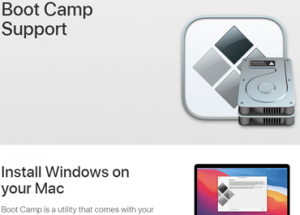

- #Virtualbox m1 macos how to#
- #Virtualbox m1 macos for mac#
- #Virtualbox m1 macos mac os#
- #Virtualbox m1 macos install#
#Virtualbox m1 macos how to#
#Virtualbox m1 macos install#
This will bypass the expectation that you'll install a new operating system. Select the “ Skip ISO boot” option on the following screen.Create an additional new virtual machine in UTM (don't use your ARM Windows virtual machine for this), and choose to “ Emulate” (rather than “Virtualize”) and then select the “ Other” type for the system.Luckily, it may still be performant and stable enough for use in migrating files and settings to your new ARM-based Windows installation, for example, which can afterward run a lot of your x86-compiled Windows software instead. However, a more modern, demanding x86 operating system may have significantly reduced performance in comparison to native M1 performance. UTM will also boot and emulate x86 virtual machines on Apple silicon, not just those running ARM-targeted operating systems.

🐇 Booting VirtualBox x86 Virtual Disk Images …It's a delight to use, and not too difficult to set up either. “ Windows on ARM” is fast on UTM with the M1 Max.
#Virtualbox m1 macos for mac#
A screenshot of the UTM app for Mac kickstarting a new virtual machine, and the choice to “Virtualize” or ”Emulate” depending on the host and virtual machine's hardware/software intercompatibility.
#Virtualbox m1 macos mac os#
It'll even let you boot older PowerPC builds of Mac OS 9, for example.

UTM (which is powered by QEMU) is a free download (although it costs something if you get it from the Mac App Store instead of the website directly), and supports a lot more than just virtualizing macOS instances or emulating x86 architecture. Getting UTM + virtualizing “Windows on ARM” I researched this situation a bit, and found that UTM was a great way to run an ARM-supported version of Windows, but I still had the hope to access my prior Windows x86 installation from VirtualBox so that I could grab any files and software configurations that I still needed from there. The ARM architecture of Apple silicon couldn't simply be “partitioned” or shared with a virtualized software system that was expecting access to real x86 hardware.

However, since VirtualBox is a hypervisor, I couldn't simply run my x86 Virtual Machines this way anymore. One of the pieces of software I used on my machine rarely but intentionally was VirtualBox, a virtualization product that can be used to run additional operating systems on your Intel-based Mac (or other x86 machine) such as Microsoft Windows. Before I switched to a 2021 MacBook Pro with the M1 Max ( Apple silicon using the ARM architecture), I was on an older Intel-based ( x86) MacBook Pro like everyone else using otherwise recent Mac hardware.


 0 kommentar(er)
0 kommentar(er)
